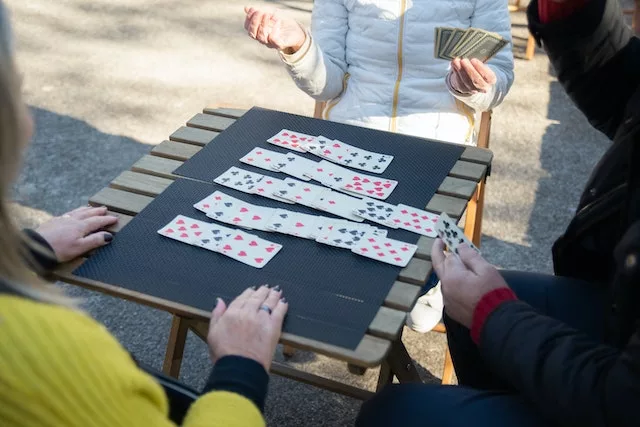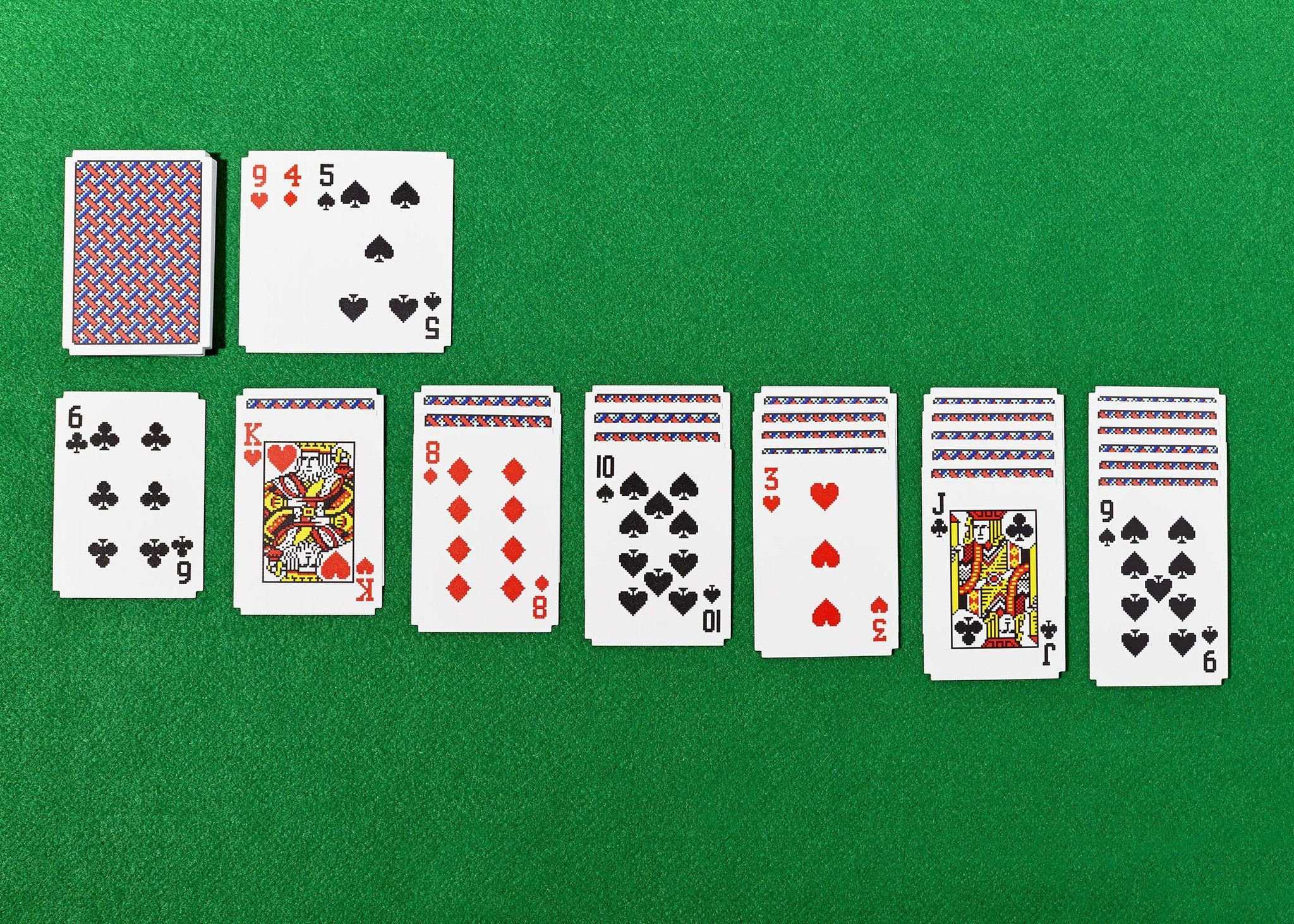The Enduring Appeal of Solitaire: An Exploration of the Classic Card Game in the Digital Age
Related Articles: The Enduring Appeal of Solitaire: An Exploration of the Classic Card Game in the Digital Age
Introduction
In this auspicious occasion, we are delighted to delve into the intriguing topic related to The Enduring Appeal of Solitaire: An Exploration of the Classic Card Game in the Digital Age. Let’s weave interesting information and offer fresh perspectives to the readers.
Table of Content
- 1 Related Articles: The Enduring Appeal of Solitaire: An Exploration of the Classic Card Game in the Digital Age
- 2 Introduction
- 3 The Enduring Appeal of Solitaire: An Exploration of the Classic Card Game in the Digital Age
- 3.1 The Origins of Solitaire: A Journey Through Time
- 3.2 The Digital Revolution: Solitaire Finds a New Home
- 3.3 The Enduring Appeal of Solitaire: A Multifaceted Phenomenon
- 3.4 Exploring the Variations: A World of Solitaire Options
- 3.5 The Benefits of Playing Solitaire: More Than Just Entertainment
- 3.6 The Future of Solitaire: A Timeless Classic in the Digital Age
- 4 Frequently Asked Questions about Solitaire
- 5 Tips for Playing Solitaire
- 6 Conclusion
- 7 Closure
The Enduring Appeal of Solitaire: An Exploration of the Classic Card Game in the Digital Age

Solitaire, a game of patience, strategy, and pure luck, has captivated players for centuries. Its simple rules and engaging gameplay have made it a timeless favorite, enjoyed by people of all ages and backgrounds. With the advent of the digital age, Solitaire has found a new lease on life, evolving into a ubiquitous online phenomenon. This article delves into the enduring appeal of Solitaire, exploring its history, gameplay, variations, and the reasons for its continued popularity in the 21st century.
The Origins of Solitaire: A Journey Through Time
The roots of Solitaire can be traced back centuries, with evidence suggesting its existence in various forms across different cultures. Early forms of the game, often played with playing cards, were likely enjoyed by individuals seeking entertainment or a way to pass the time. While the exact origins remain shrouded in mystery, the game’s enduring popularity speaks volumes about its intrinsic appeal.
The 19th century saw the rise of Solitaire as a popular pastime in Europe and North America. During this period, various versions of the game emerged, each with its unique rules and challenges. These variations, often referred to as "patience games," provided players with a wide range of options to explore.
The Digital Revolution: Solitaire Finds a New Home
The introduction of personal computers in the late 20th century marked a significant turning point for Solitaire. The game’s simple rules and straightforward gameplay made it an ideal candidate for digital adaptation. In 1990, Microsoft included a version of Solitaire, known as "Microsoft Solitaire," as part of its Windows operating system. This move proved to be a stroke of genius, as it instantly made the game accessible to millions of computer users worldwide.
The digital version of Solitaire retained the core mechanics of the traditional card game, but it also introduced new features and functionalities. These included:
- Graphical enhancements: The digital version of Solitaire offered a more visually appealing experience, with colorful cards and interactive interfaces.
- Automatic scoring: The game automatically tracked the player’s score, providing a clear measure of their performance.
- Multiple variations: Digital Solitaire offered a wider range of variations, allowing players to choose from different challenges and gameplay experiences.
- Customization options: Players could customize the game’s appearance, choosing from different card decks, backgrounds, and other visual elements.
The digitalization of Solitaire not only made the game more accessible but also propelled its popularity to unprecedented heights. Millions of people worldwide embraced the game, enjoying its relaxing nature and the satisfaction of completing a challenging hand.
The Enduring Appeal of Solitaire: A Multifaceted Phenomenon
Solitaire’s enduring appeal can be attributed to several factors:
- Simplicity: Solitaire’s rules are easy to learn, even for those unfamiliar with card games. This accessibility allows players of all skill levels to enjoy the game.
- Strategic depth: Despite its simplicity, Solitaire offers a surprising amount of strategic depth. Players need to plan their moves carefully, considering the order of cards and the potential for dead ends.
- Relaxing gameplay: Solitaire provides a relaxing and engaging experience, offering a welcome respite from the stresses of everyday life. The game’s focus on individual play encourages a sense of calm and concentration.
- Variety: Solitaire offers a wide range of variations, each with its unique rules and challenges. This variety ensures that players can find a version that suits their preferences and skill level.
- Nostalgia: For many players, Solitaire evokes a sense of nostalgia, reminding them of their childhood or simpler times. The game’s familiarity and comfort make it a cherished pastime.
Exploring the Variations: A World of Solitaire Options
Over the years, numerous variations of Solitaire have emerged, each with its own set of rules and challenges. Some of the most popular variations include:
- Klondike: The most common variation of Solitaire, Klondike involves building stacks of cards in descending order, alternating colors. The goal is to move all cards to the four foundations, arranged in ascending order by suit.
- FreeCell: This variation allows players to use four extra cells to temporarily hold cards. This added flexibility provides players with more strategic options and makes the game more challenging.
- Spider: Spider Solitaire features two decks of cards, with the goal of building stacks of cards in descending order by suit. Players can move cards between columns and create stacks of cards of the same suit.
- Pyramid: In Pyramid Solitaire, cards are arranged in a pyramid shape, with the goal of removing pairs of cards that add up to 13.
- Golf: Golf Solitaire aims to move all cards to the waste pile in ascending order. Players can only move the top card of the waste pile to the tableau.
These variations offer a wide range of challenges and gameplay experiences, ensuring that there is a version of Solitaire to suit every player’s preferences.
The Benefits of Playing Solitaire: More Than Just Entertainment
While Solitaire is primarily a game of entertainment, it also offers several cognitive benefits:
- Improved concentration: Solitaire requires players to focus their attention and make strategic decisions. This can help to improve concentration and attention span.
- Enhanced problem-solving skills: Solitaire presents players with a series of challenges that require them to think critically and devise solutions. This can help to sharpen problem-solving skills.
- Memory enhancement: Solitaire involves remembering the location and value of cards, which can help to improve short-term memory.
- Stress relief: The game’s relaxing nature and focus on individual play can help to reduce stress and anxiety.
The Future of Solitaire: A Timeless Classic in the Digital Age
Solitaire continues to thrive in the digital age, with online platforms offering a wide range of variations and features. The game’s enduring appeal, combined with its accessibility and cognitive benefits, ensures that it will remain a popular pastime for generations to come.
As technology evolves, we can expect to see even more innovative variations and features emerge, further enhancing the Solitaire experience. From virtual reality versions to augmented reality applications, the future of Solitaire promises to be both exciting and engaging.
Frequently Asked Questions about Solitaire
1. What is the goal of Solitaire?
The goal of Solitaire, depending on the variation, is typically to move all cards to the foundation piles in ascending order by suit, or to create stacks of cards in descending order by suit.
2. How many cards are used in a standard game of Solitaire?
A standard game of Solitaire uses a single deck of 52 cards.
3. What are the different variations of Solitaire?
There are numerous variations of Solitaire, including Klondike, FreeCell, Spider, Pyramid, Golf, and many others. Each variation has its unique rules and challenges.
4. Is there a strategy to playing Solitaire?
While there is no guaranteed way to win every game of Solitaire, there are strategies that can increase your chances of success. These include planning your moves carefully, considering the order of cards, and avoiding dead ends.
5. How can I improve my Solitaire skills?
Practice is key to improving your Solitaire skills. Play regularly, experiment with different variations, and try to understand the underlying strategies of the game.
6. Is Solitaire a game of skill or luck?
Solitaire is a game that combines elements of both skill and luck. While some aspects of the game are determined by the initial card arrangement, players can influence the outcome through strategic decisions.
7. What are the benefits of playing Solitaire?
Playing Solitaire can improve concentration, enhance problem-solving skills, boost memory, and provide stress relief.
8. Where can I play Solitaire online?
Numerous websites and apps offer free online versions of Solitaire. Some popular options include Microsoft Solitaire Collection, Solitaire.org, and Pogo.com.
9. Is Solitaire a good game for beginners?
Yes, Solitaire is an excellent game for beginners due to its simple rules and straightforward gameplay. The game’s accessibility makes it a great choice for those new to card games.
10. How can I learn more about Solitaire?
There are numerous resources available online and in print that provide information about Solitaire. These include websites, books, and video tutorials.
Tips for Playing Solitaire
- Start with Klondike: Klondike is the most common variation of Solitaire and a good starting point for beginners.
- Plan your moves: Before making a move, consider its impact on the overall game. Think about the order of cards, potential dead ends, and the best way to move cards to the foundation piles.
- Use the waste pile strategically: The waste pile can be a valuable resource. Use it to move cards to the tableau or to create stacks of cards in descending order.
- Don’t be afraid to restart: If you find yourself stuck, don’t be afraid to restart the game. Sometimes a fresh start can lead to a more successful outcome.
- Experiment with different variations: Once you’ve mastered Klondike, try your hand at other variations of Solitaire. Each variation offers a unique challenge and gameplay experience.
- Practice regularly: The more you play Solitaire, the better you’ll become at the game. Regular practice will help you develop strategies and improve your overall skills.
- Have fun: Solitaire is a game of entertainment and relaxation. Don’t take it too seriously and enjoy the process of playing.
Conclusion
Solitaire, a game that has captivated players for centuries, continues to thrive in the digital age. Its enduring appeal, fueled by its simplicity, strategic depth, and relaxing gameplay, ensures that it will remain a popular pastime for generations to come. Whether played on a computer, a smartphone, or a physical deck of cards, Solitaire offers a timeless and engaging experience that transcends generations. Its accessibility, cognitive benefits, and wide range of variations make it a game that can be enjoyed by people of all ages and backgrounds. The future of Solitaire is bright, promising even more innovative variations and features that will further enhance the game’s appeal. As technology evolves, Solitaire will continue to adapt and evolve, ensuring its place as a beloved classic in the ever-changing landscape of entertainment.








Closure
Thus, we hope this article has provided valuable insights into The Enduring Appeal of Solitaire: An Exploration of the Classic Card Game in the Digital Age. We appreciate your attention to our article. See you in our next article!